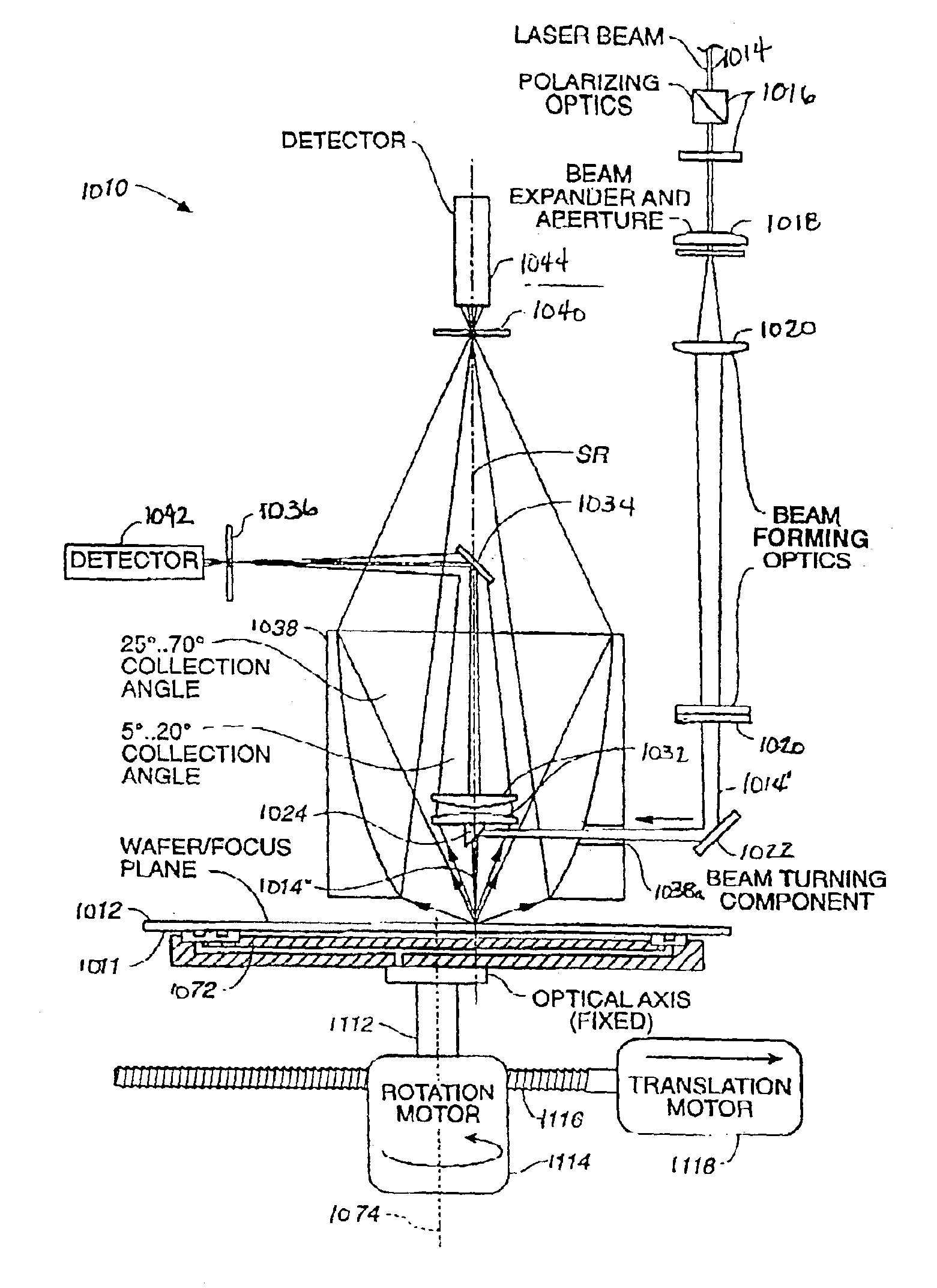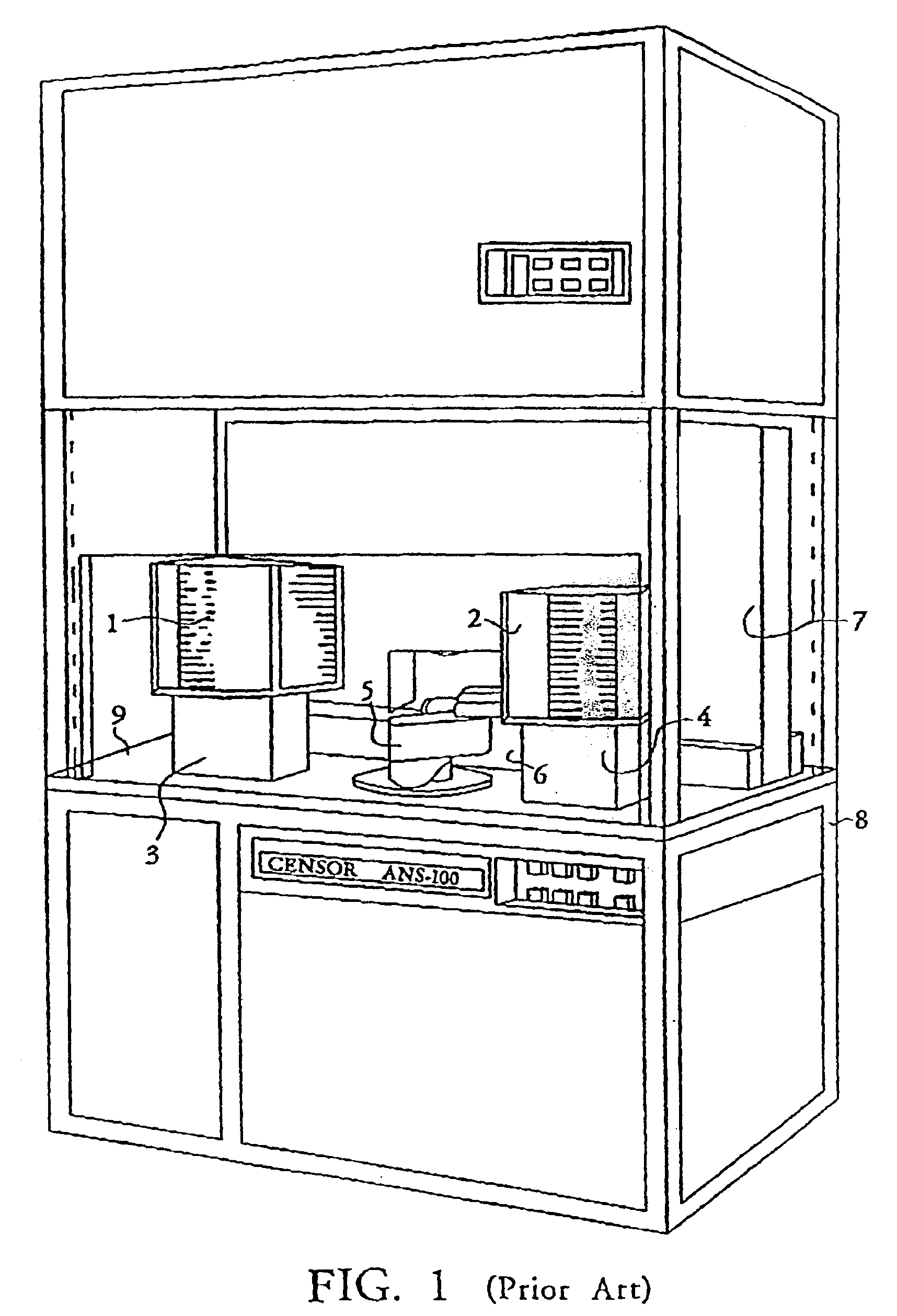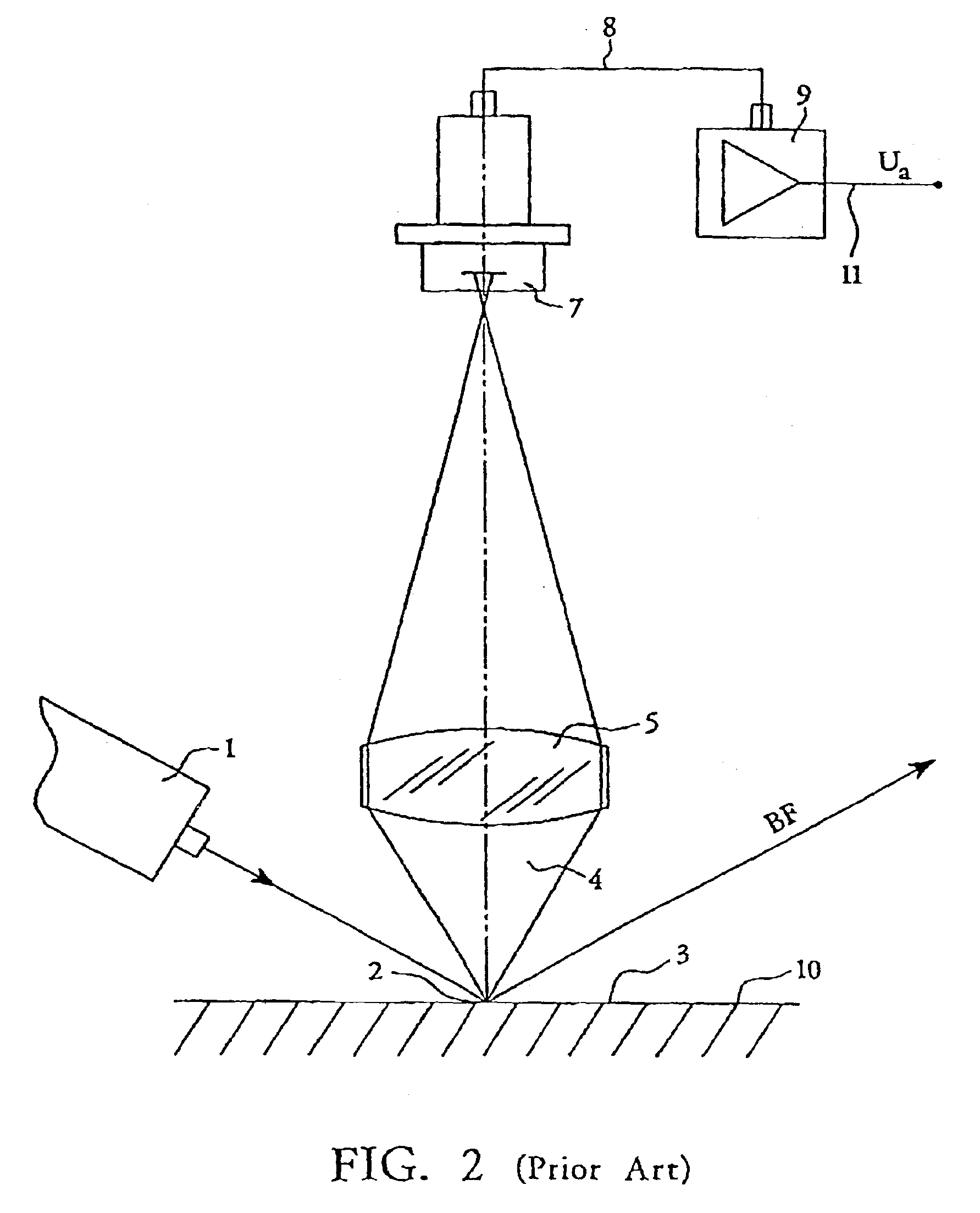Process and assembly for non-destructive surface inspections
- Summary
- Abstract
- Description
- Claims
- Application Information
AI Technical Summary
Benefits of technology
Problems solved by technology
Method used
Image
Examples
Embodiment Construction
[0051]The purpose of the present invention is, therefore, to propose a method and an assembly that avoids the drawbacks of prior art as described above and whose measuring sensitivity for particles and defects on test objects subjected to inspection is substantially greater, but without limiting haze sensitivity. At the same time, it should provide simple means to permit the adjustment of the sensitivity of the assembly, the size of the illuminated spot on the test object, and thus of the amount of diffused light generated by point defects. In addition, it should make available as large an unmodified portion of the diffused light as possible, to provide a flexible means of selectively separating and further processing the relevant parts of the diffused light, to suit the particular inspection task at hand.
[0052]The present disclosure achieves these aims by the characteristic features described below which provide the main advantages of the invention, namely:[0053]the spatially stati...
PUM
 Login to View More
Login to View More Abstract
Description
Claims
Application Information
 Login to View More
Login to View More - R&D
- Intellectual Property
- Life Sciences
- Materials
- Tech Scout
- Unparalleled Data Quality
- Higher Quality Content
- 60% Fewer Hallucinations
Browse by: Latest US Patents, China's latest patents, Technical Efficacy Thesaurus, Application Domain, Technology Topic, Popular Technical Reports.
© 2025 PatSnap. All rights reserved.Legal|Privacy policy|Modern Slavery Act Transparency Statement|Sitemap|About US| Contact US: help@patsnap.com



